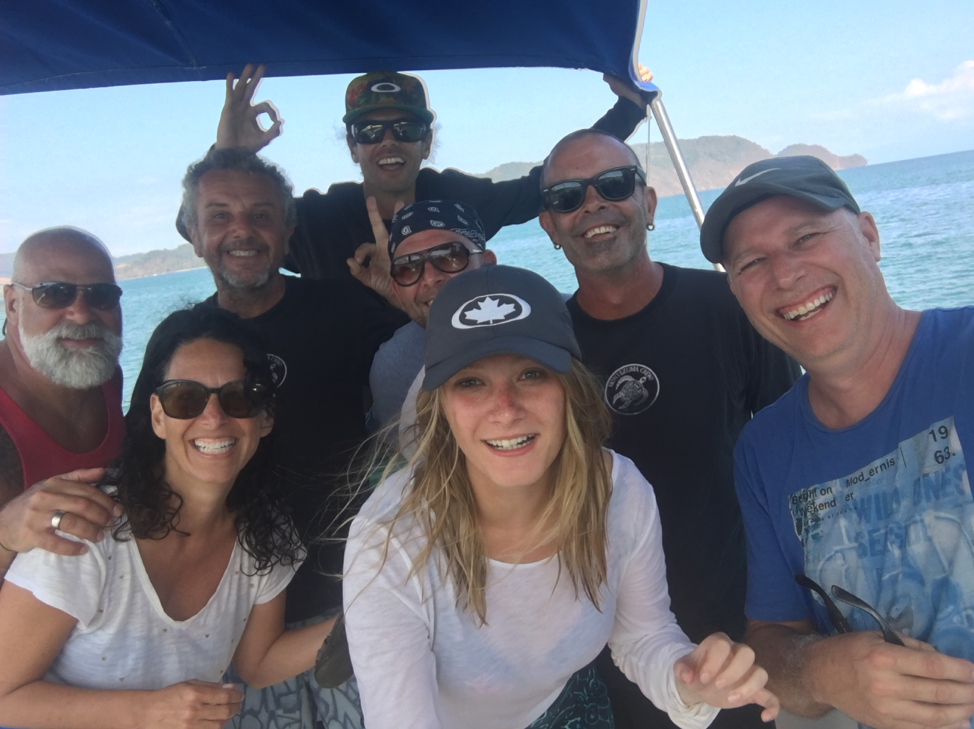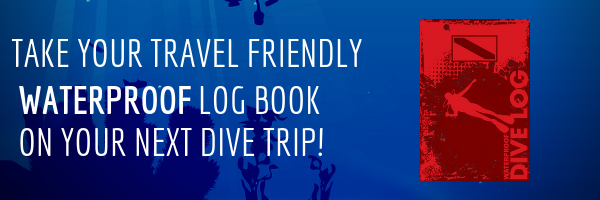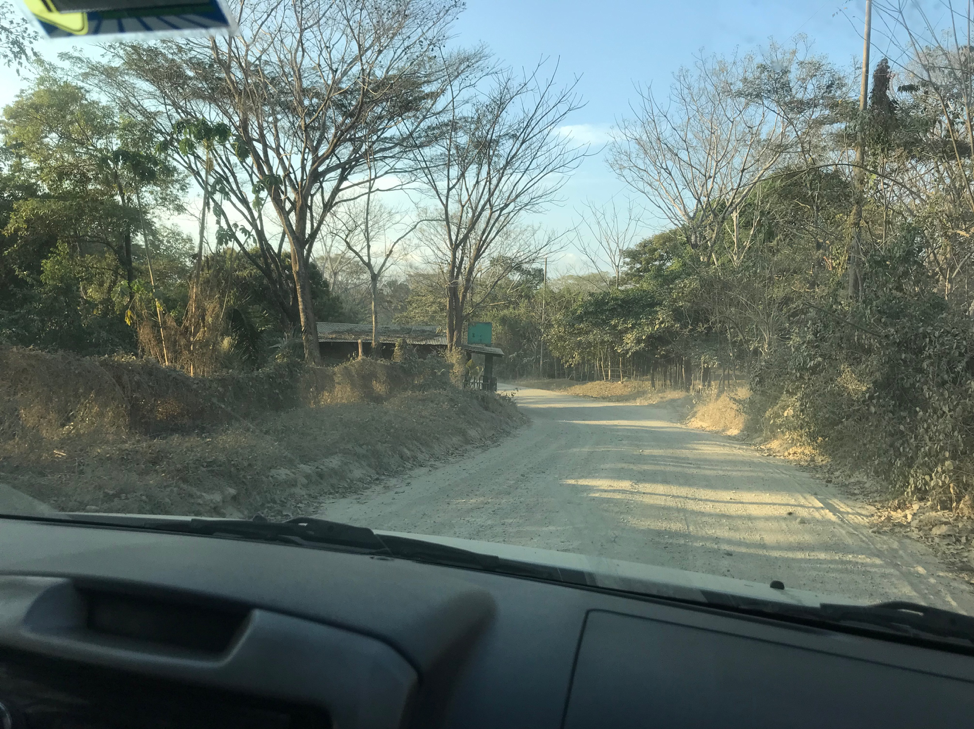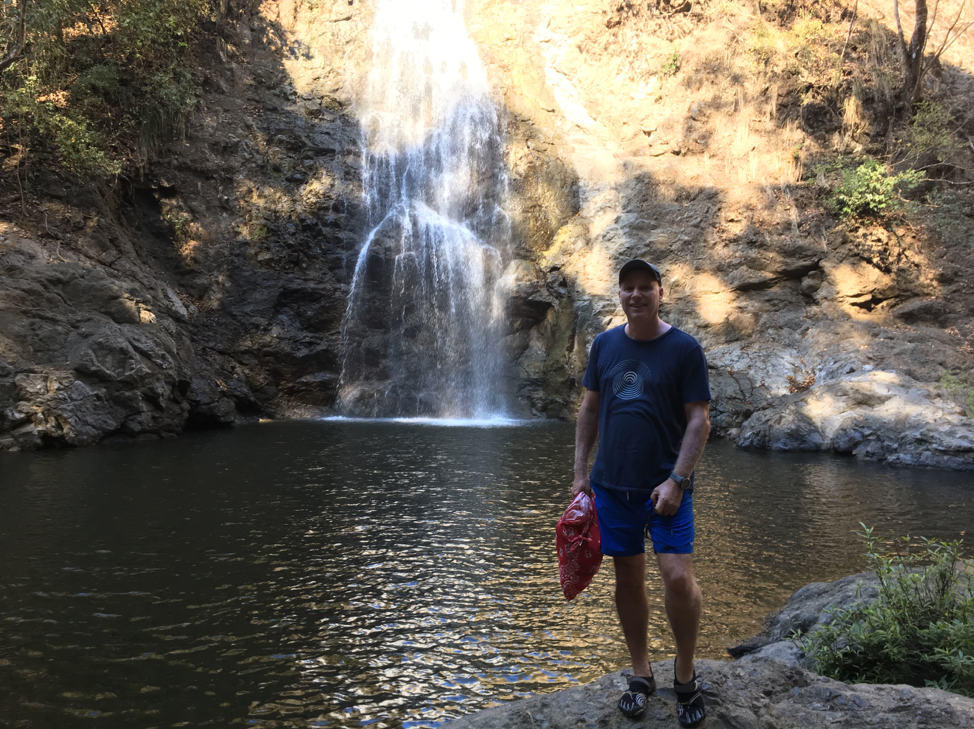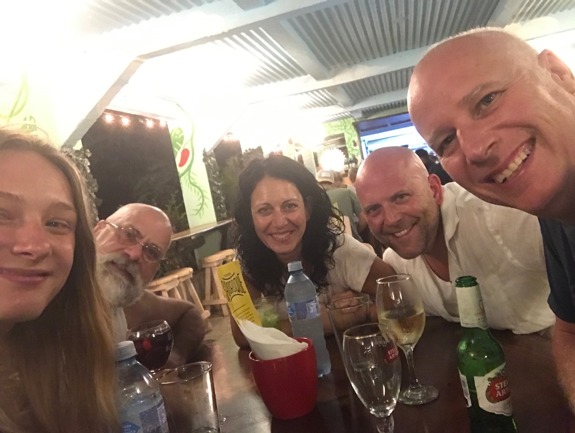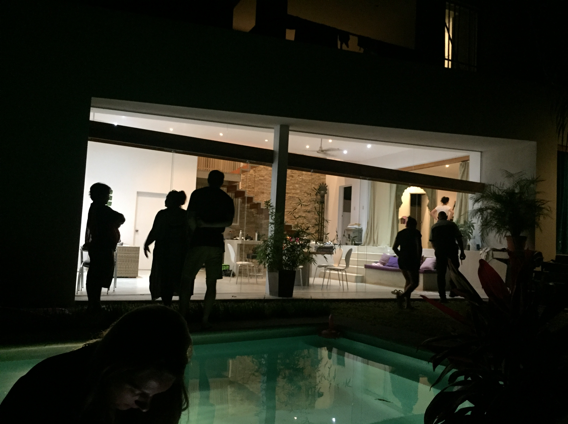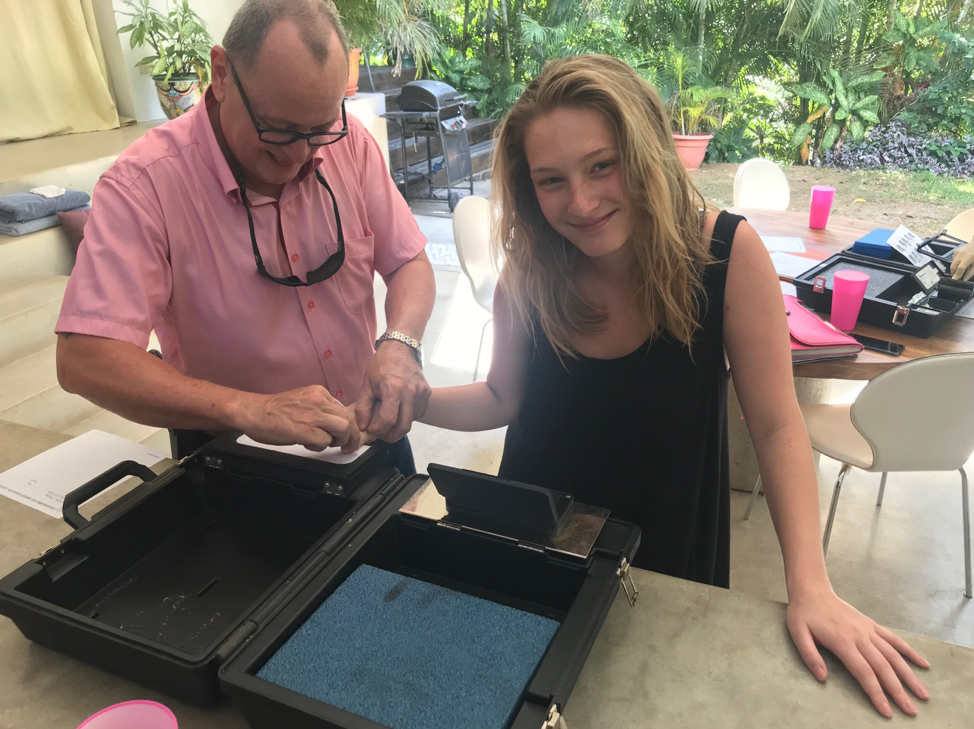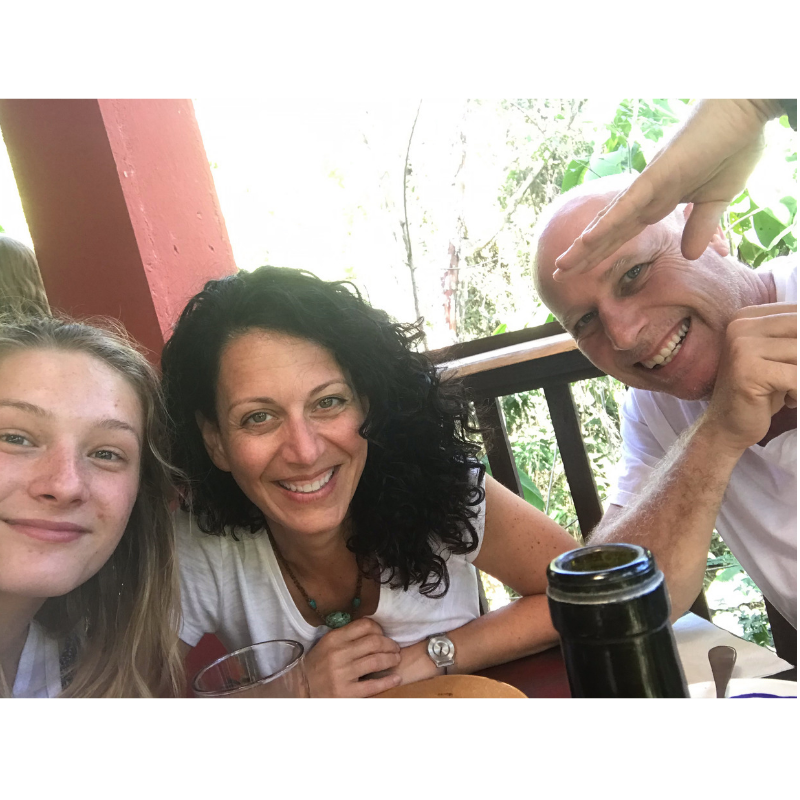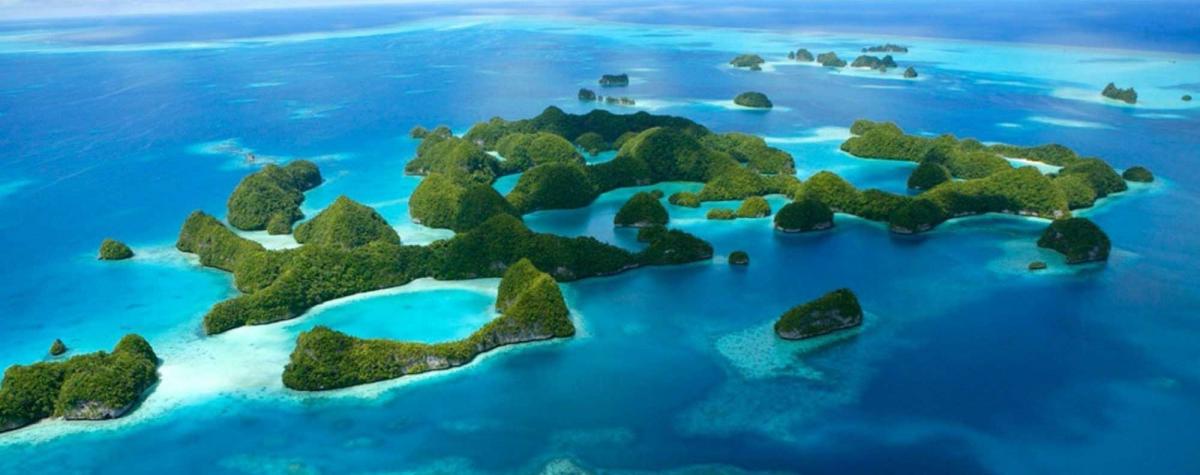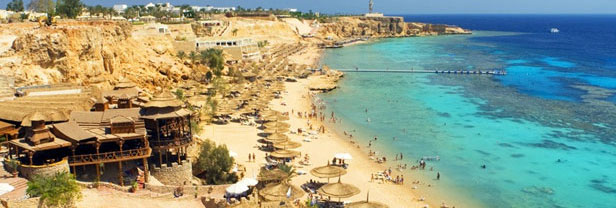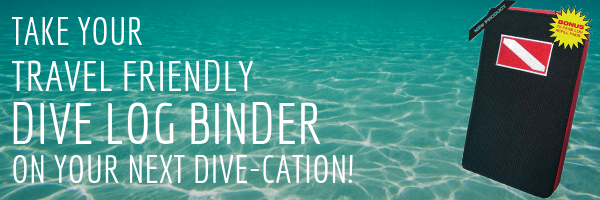As a diver, you probably know the importance of choosing the right destination. Diving in an area where there’s limited visibility and minimal marine life won’t offer any lasting memories. When you return home, you’ll probably forget uneventful dives such as this. Therefore, you should take the time to choose the right diving destination. While you can always adventure into new waters to test different destinations, we’ve compiled a list of the world’s top five diving destinations below.
#1) Barracuda Point
First on our list is Barracuda Point. Located off the coast of Sipadan — a Malaysian island in the Indo-Pacific basin — it receives its namesake from its massive shoals of native barracuda fish. It’s not uncommon for divers to see thousands of the barracuda swimming in close formation. As these predatory fish swarm in the cool waters, they create the appearance of a tornado. Of course, Barracuda Point is home to other marine life besides barracudas. When diving at Barracuda Point, you may encounter turtles, sharks, jellyfish, corals and even whales. And with an average visibility of roughly 100 feet, Barracuda Point offers some of the clearest waters in the ocean.
Because Barracuda Point is located in such a secluded area, it isn’t a particularly popular tourist. In fact, the Sabah Government only issues 120 permits to visit Sipadan per day. But if you’re lucky enough to score a permit, you can cross Barracuda Point off your diving bucket list.
#2) The Great Blue Hole
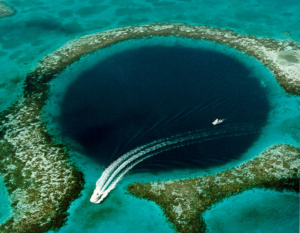 Located off the coast of Belize, the Great Blue Hole is the world’s largest underwater sinkhole. As shown in the photo to the left, it’s literally a hole at the bottom of the ocean. In terms of size, the Great Blue Hole measures approximately 1,043 feet in diameter and 407 feet deep. Experts believe it was formed naturally over the course of 100,000+ years. Regardless of when or how it was formed, though, it has since become one of the world’s top diving destinations.
Located off the coast of Belize, the Great Blue Hole is the world’s largest underwater sinkhole. As shown in the photo to the left, it’s literally a hole at the bottom of the ocean. In terms of size, the Great Blue Hole measures approximately 1,043 feet in diameter and 407 feet deep. Experts believe it was formed naturally over the course of 100,000+ years. Regardless of when or how it was formed, though, it has since become one of the world’s top diving destinations.
In 2012, the Great Blue Hole ranked #1 on Discovery Channel’s list of “The 10 Most Amazing Places on Earth.” Prior to receiving this accolade, French naval officer and explorer Jacques Cousteau said the Great Blue Hole was one of his favorite diving destinations. Cousteau even wrote about this underwater sinkhole in the sixth volume of a self-published book titled “The Undersea Discoveries of Jacques-Yves Cousteau.”
Keep in mind, only advanced and experienced divers should attempt to dive at the Great Blue Hole. To reduce the risk of injury, the Belize Tourism Board (BTB) has strict requirements for diving at the Great Blue Hole, one of which includes a minimum of 24 logged dives.
#3) The Gili Islands
The Gili islands is another top-ranked diving destination. Located off the coast of Indonesia, it’s an archipelago of three islands: Gili Trawangan, Gili Meno and Gilli Air. The waters surrounding these islands are clear, clean and teeming with marine life. Sea turtles are especially common in the waters around Gili islands. As a result, the archipelago has been given the title of “Turtle Capital of World.” You’ll generally see both green and hawksbill turtle on most dives at the Gili islands. Like the other diving destinations listed here, though, the waters of Gili islands is home to a wide range of marine life, including clownfish, grouper, starfish, sharks and more.
In the waters near Gili Air, there’s the wreckage of a Japanese patrol boat from World War 2. Over the past few decades, this wreckage has become a popular dive site for tourists of the archipelago. Other popular dive sites at the Gili islands include Shark Point, Manta Point and Simon’s Reef.
Unlike the Great Blue Hole, the Gili islands is a beginner-friendly diving destination. According to the Professional Association of Diving Instructors (PADI), the Gili islands is suitable “for all levels” of diving. So, regardless of your skill or experience, you can book a trip to dive at the Gili islands.
#4) The Great Barrier Reef
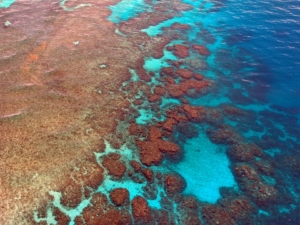 We can’t talk about the top diving destinations without mentioning the Great Barrier Reef. Consisting of nearly 3,000 coral reefs over an area of roughly 133,000 square miles, it’s the world’s largest living structure.
We can’t talk about the top diving destinations without mentioning the Great Barrier Reef. Consisting of nearly 3,000 coral reefs over an area of roughly 133,000 square miles, it’s the world’s largest living structure.
Here are some fun facts about the Great Barrier Reef that attest to its popularity as a diving destination:
- The Great Barrier Reef is home to at least 30 species of cetaceans.
- Marine biologists have identified over 1,500 species of fish in the Great Barrier Reef.
- The green sea turtle, hawksbill turtle, loggerhead sea turtle, leatherback sea turtle, Olive Ridley turtle and flatback turtle all live in the Great Barrier Reef.
- While mostly shallow, the waters of the Great Barrier Reef reach up to 160 feet at the deepest part.
- There are approximately 5,000 species of mollusc in the Great Barrier Reef.
- Dozens of species of shark live in the warm waters of the Great Barrier Reef.
- There are 17 species of snakes that live in the Great Barrier Reef.
- Humpback whales often pass through the Great Barrier Reef.
- Nearly 50 species of pipefish have been identified in the Great Barrier Reef.
It’s important to note that not all parts of the Great Barrier Reef are open to tourists. A significant portion of the area is protected by the Great Barrier Marine Park, which prohibits tourists from accessing it. The purpose of this rule is to limit stress on the Reef and its marine life.
PADI recommends taking the PADI Digital Underwater Photographer course as well as the PADI Peak Performance Buoyancy course if you’re planning to dive at the Great Barrier Reef. The PADI Digital Underwater Photographer will teach you about underwater photography so that you can capture the Great Barrier Reef’s diverse marine life on camera, whereas the PADI Peak Performance Buoyancy course will teach you how to control buoyancy.
#5) The Red Sea
Last but not least is the Red Sea. Covering an area of ocean roughly 169,000 square miles in the Indian Ocean, it offers the bright-colored coral reefs against crystal-clear waters. And being that the Red Sea is classified as one of the seven wonders of the underwater world, you can rest assured knowing that it will offer a memorable diving experience. It’s home to approximately 200 species of coral, which create a balanced ecosystem for countless other forms of marine life. Although the Red Sea has plenty of currents — making it an excellent destination for drift diving — it generally has weak waves.
The Red Sea’s thriving underwater ecosystem can be attributed to its warm, salty waters. Statistics show the surface temperature of the Red Sea is roughly 79 degrees to 86 degrees Fahrenheit on most days, making it one of the world’s warmest bodies of water. Combined with a high concentration of salt, it’s an ideal living environment for many forms of marine life. Diving at the Red Sea allows you to explore these warm, salty waters while marveling at the native marine life.
With an average depth of 1,608 feet, the Red Sea offers some pretty deep waters in which to dive. Of course, some areas are significantly deeper than others. The Suakin Trough of the Red Sea, for instance, has a maximum depth of 9,970 feet. If you’re feeling adventurous, check out some of the deeper waters in the Red Sea such as this.
Use your travel binder to track your destinations and adventures!

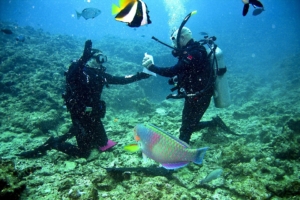 While most divers know not to touch corals, many assume that it’s okay to walk on the ocean floor if there are no corals growing on it. The problem with walking on the ocean floor around corals, however, is that it stirs up sediment, which eventually lands on corals. Corals are porous, consisting of a honeycomb-pattern of small holes in which algae lives. If you walk along the bottom of the ocean floor next to a coral, some of the sand and sediment will coat the coral and clog its pores. When this happens, algae won’t be able to make its way inside the coral. And because algae is the main source of food (energy) for corals, this often leads to bleaching and eventually the death of corals.
While most divers know not to touch corals, many assume that it’s okay to walk on the ocean floor if there are no corals growing on it. The problem with walking on the ocean floor around corals, however, is that it stirs up sediment, which eventually lands on corals. Corals are porous, consisting of a honeycomb-pattern of small holes in which algae lives. If you walk along the bottom of the ocean floor next to a coral, some of the sand and sediment will coat the coral and clog its pores. When this happens, algae won’t be able to make its way inside the coral. And because algae is the main source of food (energy) for corals, this often leads to bleaching and eventually the death of corals.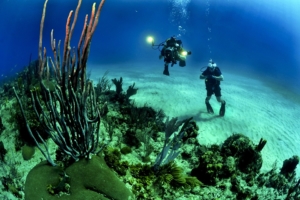 Assuming this is your first time diving around a particular coral reef, you should spend some time researching the local marine life. No two coral reef systems have the exact same species of marine life. If it’s your first time diving at a coral reef, you’ll encounter a myriad of unfamiliar marine species. By researching the coral reef’s marine life, though, you’ll a better idea of what to expect.
Assuming this is your first time diving around a particular coral reef, you should spend some time researching the local marine life. No two coral reef systems have the exact same species of marine life. If it’s your first time diving at a coral reef, you’ll encounter a myriad of unfamiliar marine species. By researching the coral reef’s marine life, though, you’ll a better idea of what to expect.